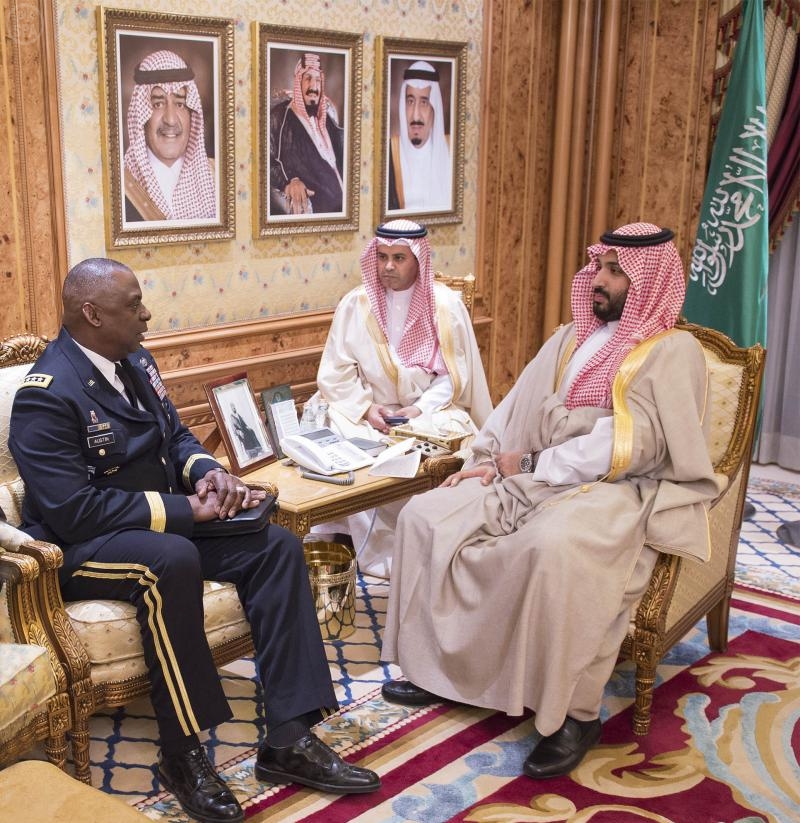by Col. (ret.) Dr. Jacques Neriah
Founded jointly with the Wechsler Family Foundation
Vol. 15, No. 10 March 31, 2015
- The Saudis did not conduct detailed, top-level discussions with the Obama Administration on U.S. support for the operation until a few days before the beginning of the air strikes.
- It appears that the Saudis have little trust in the U.S. administration and suspected that the Obama administration’s Iranian agenda would lead it to stop the Saudi coalition acting against the Iranian-backed Houthis in Yemen.
- Moderate Arab countries have come to the conclusion that they must fight for the survival of their regimes and that terrorism identified with the Sunni jihadists is the main factor for instability. Their scorched earth practices offer fertile ground for the incursion of “heretical” Shiite forces from Iran.

A Saudi F-15 fighter aircraft
From different accounts relating to the decision-making process that led to the military intervention, it is known that traditional U.S. allies (such as Turkey and Egypt) began to discuss the military coalition at the beginning of March, following the visit to Saudi Arabia by Turkish President Erdogan who expressed his support for the operation. It was no surprise to hear afterwards that Turkey provided logistical support, verbally attacked Iran and called on Iran and the militant groups to withdraw from Yemen.
On March 4, Saudi King Salman pressed Pakistan’s Prime Minister Nawaz Sharif to “boost the number of troops in the kingdom,” the Financial Times1 reported.
The coalition was ultimately created on the weekend preceding the Saudi attack at a meeting held in Riyadh, Saudi Arabia.
The Saudis, the main actors in the play, did not conduct detailed, top-level discussions with the Obama Administration on U.S. support for the operation until a few days before the beginning of the air strikes. The Saudis and their allies spoke about different options but none went into specifics.
Incredibly, General Lloyd Austin, head of the U.S. Central Command, told a Senate Armed Services Committee hearing that the U.S. learned the Saudis were going to attack Yemen only one hour before the operation was launched. In other words: the U.S. was taken by surprise and the Saudis had succeeded in their deception plan.2

U.S.
Central Command chief General Lloyd Austin met with Saudi Defense
Minister Prince Mohammed bin Salman in February 2015. (SPA)
The Saudis are exasperated by the Obama Administration’s courtship of Iran — the same Iran that supports their enemies in Lebanon, Syria, Bahrain, Yemen and Iraq, and claims control of four Arab capitals (Beirut, Damascus, Baghdad and Sana’a). Saudi Arabia decided it was time to draw the line between the main two camps fighting over hegemony in the Middle East (the Iran-led axis versus the moderate-Arab camp led by Egypt and Saudi Arabia) and demanded that the U.S. choose sides in the war.
This may explain why the Saudis discussed with the U.S. different options in Yemen but never went into details about their military intentions. It is evident that the Saudis perceived that the U.S. did not approve of such a move after the Americans expressed reservations about such intervention.
This could explain the low-profile U.S. “logistic and intelligence support” given to the operation. As in the “lead-from-behind” 2011 Libyan war strategy, the U.S. chose to stay “under the radar” to avoid openly associating with the operation it had to accept after the fact as a reality. The U.S. administration, taken by surprise, did not react immediately. Only two days later Obama called the Saudi king to express half-hearted U.S. support.
The Saudi coalition also has another dimension: For the first time since 1948 the Arabs have succeeded in creating a military coalition aimed at an Arab state and not linked to the Arab-Israeli conflict. While Arab armies joined the military coalition in the first Gulf War, the coalition was led by the United States and was built around the American and international forces that took part in the campaign against Saddam Hussein. The Arab forces served more as a fig leaf.
Today, moderate Arab countries have come to the conclusion that they must fight for the survival of their regimes and that terrorism identified with Sunni jihadists and the extremist ideology of Salafi Islam is the main factor for instability. Their scorched earth practices offer fertile ground for the incursion of “heretical” Shiite forces from Iran.
Islamic organizations classified by the different regimes as terrorist groups have become the main target of the moderate regimes. This is the concept at the core of the pan-Arab force to be created as an intervention force to back Arab regimes under attack. Egyptians have pointed to Libya as being the next target for an Arab military intervention, while Palestinian President Mahmoud Abbas called for Arab military intervention in Gaza (meaning against the Hamas).
* * *
Notes
1 Financial Times, March, 4, 2015, Saudis to press Pakistan for more troops, http://www.ft.com/intl/cms/s/0/5d00fbfe-c16e-11e4-8b74-00144feab7de.html?siteedition=intl#axzz3VxB4ds9a
2 Bloomberg View, March 27, 2015, Eli Lake & Josh Rogin, How Saudis took the lead in Yemen, http://www.bloombergview.com/articles/2015-03-27/how-saudis-took-the-lead-in-yemen
Col. (ret.) Dr. Jacques Neriah
Source: http://jcpa.org/article/saudi-military-intervention-yemen/
Copyright - Original materials copyright (c) by the authors.
No comments:
Post a Comment